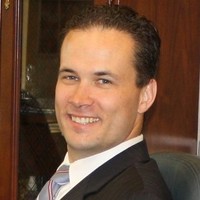From Worries to Wonders: Fostering Growth and Efficiency at MEC
Hewlett Packard Enterprise
Working in IT can be exhausting. Migrating systems and undergoing seemingly endless maintenance and upgrades take up so much time that it’s hard to get to the stuff that really matters, like providing end users with a hassle-free experience. If IT professionals could have just one wish, it would be to always work with solutions that deliver as promised so they don’t have to worry about it.
I used to worry a lot. I’ve been with MEC for 20 years, and infrastructure maintenance was a thorn in the side of my IT team and the people who depend on our network and servers. We are America’s top fabricator of metal components for the automotive, military, recreational vehicle, construction, and energy transition sectors. We make a lot of parts and move a lot of information, so our infrastructure must be rock solid—but that wasn’t always the case.
A High-Maintenance Beginning
When I started here, we had two facilities that were 17 miles apart, in Mayville and Beaver Dam, Wisconsin. We had three Micron tower servers as our primary systems with white-box servers and storage arrays we’d built ourselves using Adaptec and PCI RAID controllers, making them as hot-swappable as possible. All of these parts increased the maintenance and management burden. I’d go in every morning to find a RAID controller had gone offline, and we spent all our time maintaining those controllers and bare metal servers.
If I needed to increase server storage, I had to buy six new hard drives, schedule downtime, and come in after hours or on a weekend to install them and manually copy the contents of the old RAID to the new one.
In 2007, we adopted new Hewlett Packard Enterprise (HPE) solutions, including a C7000 blade chassis and HPE EVA storage arrays. Suddenly, I could configure virtual servers and drives with VMware instead of physically adding or pulling components. It was a whole new ball game and started us on the path to a more modern environment.
The Data Center in a Box
Over the next decade, we doubled in size. As our IT needs became more demanding, we continued to build our systems on HPE technology. In 2017, we had conversations with our partner, American Digital, and agreed that the HPE 3PAR was the best choice at the time for our main data centers. We also adopted HPE SimpliVity hyperconverged infrastructure (HCI), a perfect blend of performance and price that was easy to manage.
HPE SimpliVity is an all-in-one data center in a box that offers a complete compute, storage, networking, and data services stack that can handle general-purpose workloads. It leverages HPE ProLiant servers and provides resilient virtualization resources that are easy to consume, support, and manage across distributed sites from a unified console. As the solution matured, it also simplified firmware, OS, and VMware hypervisor updates. We didn’t have to call HPE support anymore to ensure we were running the latest versions of everything, which removed a lot of the maintenance burden from our shoulders.
We adopted HPE SimpliVity at our more remote facilities in Virginia and Arkansas. Both of those facilities were in out-of-the-way locations, and if there was an issue, our IT team had to travel hours from Mayville headquarters to address the issue—and that travel time could mean downtime for the plant. We wanted something with more redundancy and fault tolerance to save teams the hassle and expense of traveling, and to prevent interruptions in our operations.
HPE SimpliVity gave us excellent fault tolerance in addition to high availability, bridging the distance between our headquarters and our remote facilities. We deployed two high-availability nodes with built-in VM data protection and simplified management at each of these sites. If one of the HPE SimpliVity nodes goes down, for example, the VM servers will fail over to the backup node.
IT used to be pretty siloed: I led, and my team followed, doing what we needed to do at each location. Adopting HPE SimpliVity allowed me to step away from a more day-to-day technical role. Now, my three system admins have more independence and can handle more work—regardless of the location. They can spawn VMs or allocate storage without my approval or involvement. Sharing the workload makes us a more efficient and cohesive IT team, saving time and improving how we manage our environment.
Another Round of Upgrades
By 2022, we had 20 sites and were ready for another upgrade of our HPE servers and storage. Our existing environment had reached end of life, and technology had evolved so much that we were looking forward to taking advantage of the newer solutions.
This time, we upgraded to HPE Alletra dHCI. HPE Alletra dHCI uses disaggregated hyperconverged infrastructure (dHCI) to decouple storage from compute. We can scale one or the other independently, mixing and matching components to adapt our systems to our business needs. By leveraging VMware along with our reliable and performance-optimized HPE ProLiant servers, HPE Alletra dHCI gives us the benefits of the new without learning how to do things from scratch. It’s more of an extension of our 2017 refresh rather than a replacement.
We use a combination of HPE SimpliVity and HPE Alletra dHCI at our facilities, depending on its operations. We recently deployed a fourth HPE SimpliVity cluster at one of our locations in Defiance, Ohio, and we will likely deploy HPE SimpliVity when we open our new Milwaukee headquarters.
We’re running HPE Alletra dHCI at our biggest data centers since they have the most file shares and are remote sites that need many connections. It acts as storage for ERPs at Mayville, Byron Center, and an Ohio facility. Users at our Ohio facility are generating reports that used to take 20 minutes in less than five—a significant improvement!
A big part of our enhanced environment comes from a solution we’ve had for a long time. MEC started using Zerto for disaster recovery (DR) before it became a part of HPE. With its continued enhancements and our updated environment, we are enjoying seamless integrations and more synergies, and we use it to protect the file servers at our three biggest data centers. It replaced VMware SRM, which was inconsistent and incredibly complicated to set up compared to Zerto. Every time we ran a failover test, it would generate a different outcome, and we were getting all kinds of failures when we tried to spin up backups.
We deployed Zerto’s continuous data protection and DR on our HPE Alletra dHCI clusters, and it started replicating servers in 15 minutes, which was amazing. It reduced our sync cycle—and potential data loss—from five minutes to five seconds, producing consistent failover test results, which is especially important at our automated plants. We can generate reports to demonstrate data resiliency to our auditors, too. Zerto's failover capabilities help ensure compliance with the latest security measures.
A One-Stop-Shop for All the Good Stuff
One of the benefits of having such a history with a vendor is that they often don’t feel like a vendor anymore; they are friends. Our HPE account manager, Jim Knopf, has been with us since the beginning, and our kids have played soccer against each other. He’s not the only person with such a long tenure, and that matters. When we have to call with an issue, we don’t have to explain our setup to a new rep because our last rep moved on. We know the person on the other end of the line, and they will always walk us through a fix. And if we send an email, we know they will reply as soon as humanly possible.
Plus, we have access to HPE’s portfolio of comprehensive solutions. No matter what I’m looking for, they have an answer. We can confidently support our 20 sites with HPE SimpliVity and HPE Alletra dHCI, and are ready for when the next one comes online.
HPE is a one-stop shop for all the good stuff, and their solutions enable us to keep abreast of technology and run our business better. Every infrastructure refresh has reduced the burden on my IT team as new functionalities and synergies help us save time and manage our environment more efficiently.







